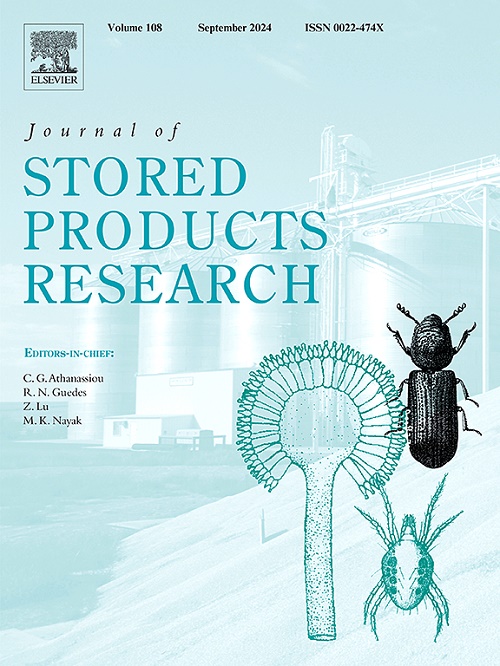Optimization of machine learning models for predicting glutinous rice quality stored under various conditions
IF 2.7
2区 农林科学
Q1 ENTOMOLOGY
引用次数: 0
Abstract
The preservation of freshly harvested glutinous rice (GR) is essential for maintaining its nutritional and economic value. This study examines the impact of storage temperature and duration on key quality attributes, including moisture content (MC), germination growth rate (GGR), water absorption capacity (WAC) and head rice yield (HRY). GR samples were dried at 60 °C and stored under freeze (−10 °C), cold (6 °C), and ambient (∼26 °C) conditions for six months, with biweekly data collection. Statistical analysis using ANOVA revealed that storage duration significantly affected MC, GGR and HRY, while storage temperature primarily influenced MC. The Random Forest (RF) machine learning model demonstrated high predictive performance (R2 > 0.9) with low error values for predicting quality attributes. Hyperparameter tuning (HPT) through grid search optimization further improved the model's performance, as validated by parity plots showing strong alignment (regression slopes >0.8) between predicted and experimental results. SHapley Additive exPlanations (SHAP) and contour plots provided detailed insights into the influence of storage parameters on quality attributes. This comprehensive approach offers actionable guidance for optimizing GR storage conditions, contributing to food security, and supporting to the achievement of the United Nations Sustainable Development Goals (SDGs).
求助全文
约1分钟内获得全文
求助全文
来源期刊
CiteScore
5.70
自引率
18.50%
发文量
112
审稿时长
45 days
期刊介绍:
The Journal of Stored Products Research provides an international medium for the publication of both reviews and original results from laboratory and field studies on the preservation and safety of stored products, notably food stocks, covering storage-related problems from the producer through the supply chain to the consumer. Stored products are characterised by having relatively low moisture content and include raw and semi-processed foods, animal feedstuffs, and a range of other durable items, including materials such as clothing or museum artefacts.

 求助内容:
求助内容: 应助结果提醒方式:
应助结果提醒方式:


